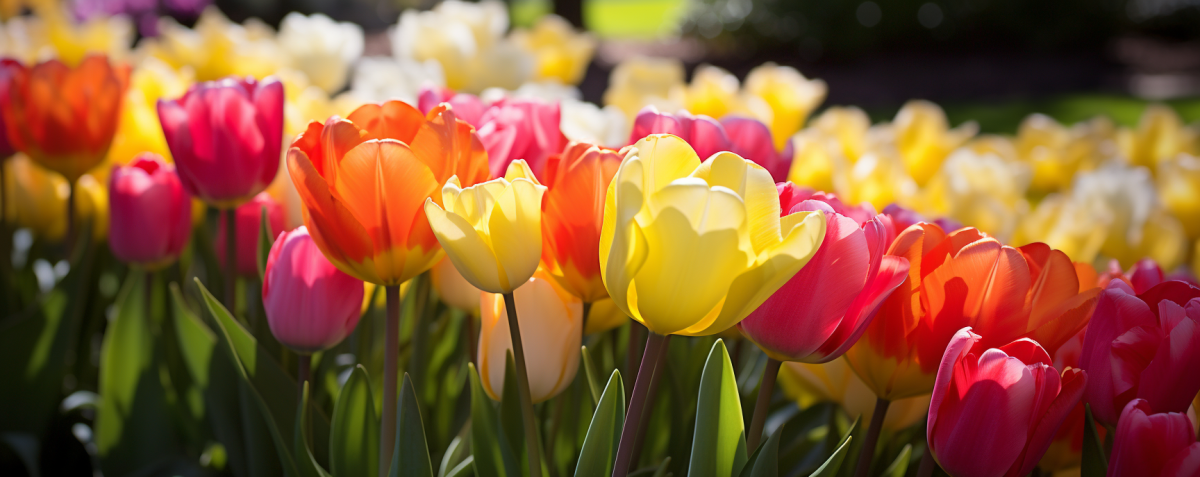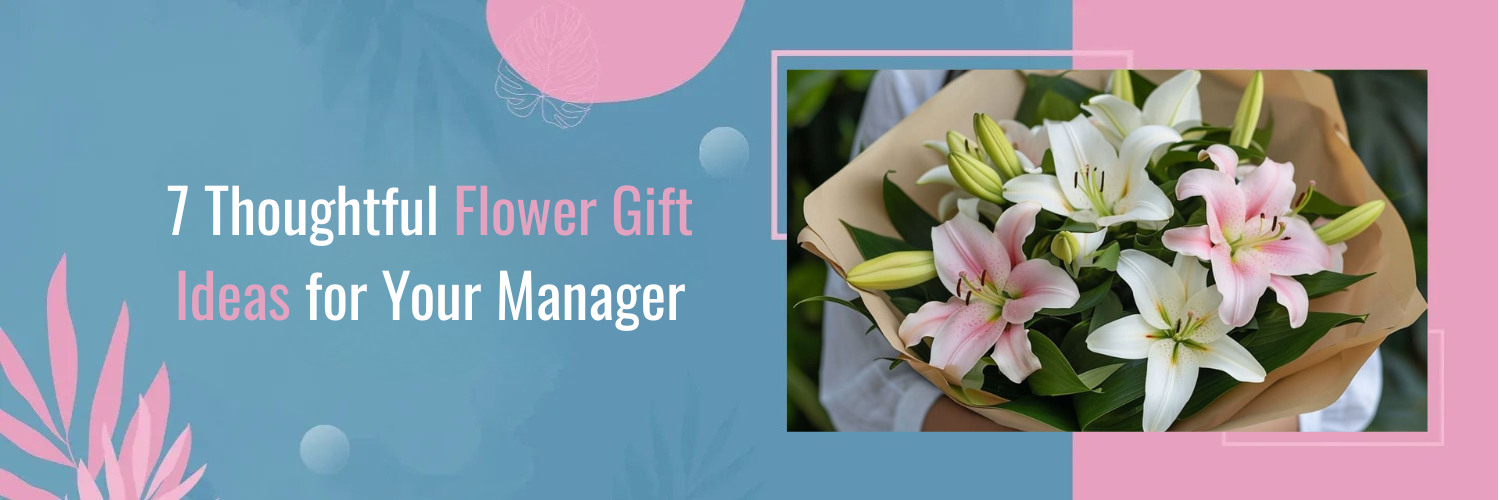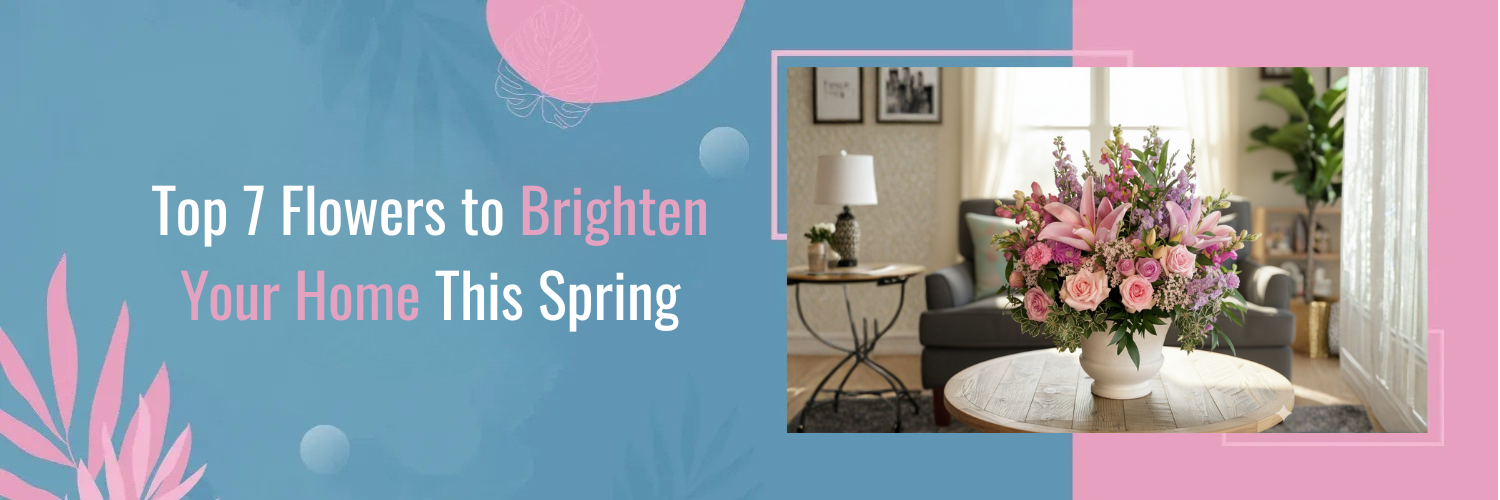Colorful May Garden

April is a pivotal month for gardeners. It’s the moment when we lay the groundwork for a breathtaking May garden, setting the stage for an explosion of colours that captivate the senses. Imagine strolling through your park in May, surrounded by various blossoms in various hues, shapes, and sizes. The scent of flowers fills the air, and vibrant petals dance in the gentle spring breeze. This is the magic of a well-planned April garden, and in this guide, we will explore the best flowers to make it happen.
Welcome to our guide on the best flowers to plant in April for a colourful May garden. As spring emerges from its slumber, gardeners eagerly anticipate the burst of colour and vitality accompanying the transition from April to May. This period offers a unique opportunity to sow the seeds of a vibrant garden that will bloom in all its glory just in time for May’s warm, sunny days.
Top Flowers to Plant in April

Tulips (Tulipa spp.)
Tulips are renowned for their exquisite beauty and come in stunning colours and shapes. From the classic red tulip to the elegant parrot tulip, a variety suits every taste. To ensure a striking May display, plant tulip bulbs in well-drained soil and provide adequate sunlight. Remember to plant them at the recommended depth for your region and water them thoroughly after planting.
As spring progresses, your tulips will burst forth in a riot of colour, creating a dazzling centrepiece for your May garden. To extend the blooming period, plant tulips with varying bloom times so that you can enjoy their beauty throughout the month.
Daffodils (Narcissus spp.)

Daffodils, with their cheerful yellow and white blooms, are a symbol of spring’s arrival. These hardy flowers are easy to grow and require minimal care, making them an excellent choice for novice and experienced gardeners. Plant daffodil bulbs in well-drained soil in a sunny or partially shaded location. Their bright blossoms will greet you with joy in May, often naturalizing and returning year after year.
Daffodils not only add colour but also emit a pleasant fragrance that signals the arrival of spring. Consider planting them in clusters or along pathways for a visually appealing garden.
Pansies (Viola tricolor)

Pansies are a beloved choice for April planting, known for their delicate, heart-shaped petals and a wide range of colours. These charming annuals thrive in cool weather, making them ideal for spring gardens. Pansies are versatile and can be used in various ways, from borders to container gardens. They prefer well-drained soil and can tolerate partial shade.
What makes pansies even more attractive is their longevity. With proper care, they can continue to bloom well into May, providing continuous colour and beauty to your garden. Deadheading (removing spent flowers) encourages more blooms and extends their flowering period.
Hyacinths (Hyacinthus spp.)

Hyacinths are celebrated for their intense fragrance and clustered florets that form a dense spike of flowers. Available in various colours, including vibrant purples, pinks, and blues, hyacinths add visual and olfactory delight to your garden. Plant hyacinth bulbs in well-drained soil in a sunny spot, and you’ll be rewarded with their stunning display in May.
These spring favourites are excellent for borders, beds, or indoor forcing. Their fragrance alone makes them a standout choice, and they pair beautifully with other spring-blooming bulbs like tulips and daffodils for a stunning May garden.
Perennials for a Lasting Impact
While annuals provide immediate bursts of colour, perennials promise lasting beauty year after year. Let’s explore two perennial options that will leave a lasting impact on your May garden.
Bleeding Heart (Dicentra spectabilis)

Bleeding hearts are renowned for their unique and captivating appearance. These perennials produce graceful, arching stems adorned with dainty, heart-shaped flowers in shades of pink
and white. Plant them in a partially shaded area with well-drained soil, and they will reward you with their delicate beauty each spring.
To ensure the longevity of your bleeding hearts, mulch around the base to retain moisture and prevent weeds. They are also a fantastic addition to shaded gardens or woodland settings, where their elegance truly shines.
Daylilies (Hemerocallis spp.)

Daylilies are known for their incredible variety, with thousands of cultivars available in different colours, sizes, and shapes. What makes them particularly appealing is their robustness and adaptability. Daylilies thrive in various conditions and require minimal maintenance, making them an excellent choice for a low-effort, high-reward perennial.
Plant daylilies in well-drained soil will not only thrive but also multiply over the years, creating more prominent and more impressive clumps of blooms. Divide daylilies every few years to encourage prolific flowering, providing room for new growth and ensuring their lasting impact on your May garden.
Companion Plants and Color Schemes
Creating a visually appealing garden involves more than selecting beautiful flowers; it’s also about harmoniously arranging them. Companion planting and thoughtful colour schemes can transform your garden into art. Here’s a closer look at these critical aspects of garden design:

Companion Plants
Companion planting involves strategically placing plants that benefit each other when grown nearby. It’s not just about aesthetics; it’s a practice that promotes healthier, more resilient plants and can even deter pests. Here are some popular companion planting combinations:
- Marigolds (Tagetes spp.) with Tomatoes:
Marigolds release a natural pesticide into the soil that helps deter nematodes, which can harm tomato plants. Plant marigolds around your tomato plants for added protection.
- Basil with Tomatoes:
Basil and tomatoes are culinary companions and great garden companions. Basil can improve the flavour of tomatoes and may deter some tomato pests.
- Nasturtiums with Cucumbers:
Nasturtiums can repel aphids and cucumber beetles, making them excellent companions for cucumber plants. Plus, their vibrant flowers add a splash of colour.
- Lavender with Roses:
Lavender not only complements the beauty of roses
but also deters aphids and other pests that can plague rose bushes.
- Companion Flowers with Vegetable Plants:
Planting flowers like calendula, zinnias, and sunflowers among your vegetable crops can attract beneficial pollinators and provide a visually pleasing contrast.
- Dill with Brassicas:
Dill can attract beneficial insects like ladybugs and parasitic wasps while deterring pests that often affect brassicas like cabbage and broccoli.
- Rosemary with Beans:
Rosemary can deter bean beetles and other pests while enhancing the flavour of beans.
Colour Schemes
Creating a pleasing colour scheme in your garden involves selecting flower colours that work harmoniously together. Here are some tips for creating beautiful colour combinations:

- Monochromatic:
This scheme involves using different shades of a single colour. For example, you might plant flowers in various shades of purple
for a soothing and elegant garden.
- Analogous:
Analogous colour schemes involve selecting colours next to each other on the colour wheel. For instance, planting shades of pink and purple together creates a harmonious and pleasing effect.
- Complementary:
Complementary colours are opposite on the colour wheel, such as purple and yellow or blue and orange. This combination creates dynamic contrast and makes the colours pop.
- Triadic:
Triadic colour schemes use three evenly spaced colours on the colour wheel. For example, you could choose red, yellow, and blue for a vibrant and balanced garden.
- Contrast:
Pairing contrasting colours, like red and green or purple and yellow, creates a bold and eye-catching effect.
- Warm and Cool:
Warm colours like reds, oranges, and yellows can create a sense of excitement, while cool colours like blues and purples evoke calmness. Combining these can provide a balanced and visually stimulating garden.
Factors to Consider Before Planting
Before embarking on your gardening journey in April, there are crucial factors to consider that will significantly impact the success and beauty of your May garden.
Climate and Location

The success of your May garden begins with an understanding of your local climate and location. Different flowers thrive in different environments, and it’s crucial to select plants that can withstand the conditions in your area. For instance, if you live in a region with cold winters, you’ll want to choose hardy varieties that can handle late frosts. Conversely, those in warmer climates must consider heat tolerance and water requirements. By aligning your flower choices with your climate and location, you’ll set the stage for a thriving garden.
To determine the best flowers for your region, consult with local gardening experts or nurseries. They can provide valuable insights into the plants most likely to flourish in your microclimate. Additionally, consider investing in a reputable gardening app or website that offers plant recommendations based on your ZIP code or location.
Soil Preparation

One of the often-overlooked secrets to a stunning May garden is soil preparation. The soil serves as the foundation for your plants, providing essential nutrients and a stable environment for their roots to grow. Before planting anything in April, take the time to assess your soil’s condition. Start by conducting a simple soil test to determine its pH level and nutrient content. This information will guide you in making any necessary amendments.
Improving your soil might involve adding organic matter, such as compost or well-rotted manure, to enhance its fertility and structure. Consider raised beds or planting mounds for soils with drainage issues to ensure proper aeration and water drainage. Well-prepared soil provides the ideal conditions for your flowers to establish robust root systems and flourish in May.
Sunlight and Shade

As you plan your April garden, don’t forget to account for the varying sunlight requirements of different flowers. Some plants thrive in full sun, basking in the sun’s direct rays for a significant part of the day. Others, however, prefer partial or even full shade, thriving in the dappled light beneath taller plants or trees.
To determine the best planting spots for your flowers, note how sunlight moves across your garden throughout the day. Consider creating microclimates by strategically placing taller plants to provide shade for those that require it. This careful planning will ensure that each flower gets the right amount of sunlight to flourish, creating a harmonious and visually appealing garden in May.
Conclusion

In this journey from April to May, your garden promises transformation, beauty, and the celebration of life’s cycles. As you embark on this gardening adventure, remember that you’re not just planting flowers; you’re cultivating moments of serenity and wonder in your outdoor haven.
To make your May garden dreams a reality, why not add elegance and convenience? Bourkes Florist
can help you bring the beauty of flowers directly to your doorstep. Whether you’re seeking the perfect blooms for your garden or a delightful floral arrangement to grace your home, we’re here to assist you. Order your flowers today!
FAQs
Q: Can I plant flowers in April if there’s still a chance of frost?
While April is generally a good time to plant, it’s essential to be mindful of the potential for late frosts in some areas. You can use row covers, cloths, or other protective measures to protect your plants from frost damage. Alternatively, consider choosing cold-hardy varieties or waiting until the risk of frost has passed.
Q: What are some low-maintenance flowers for beginners to plant in April?
Low-maintenance flowers like marigolds, zinnias, cosmos, and sunflowers are excellent choices for beginners. These annuals are easy to grow and provide vibrant blooms throughout the summer. Perennials like daylilies and coneflowers are also great options due to their resilience and minimal care requirements.
Q: How do I determine my soil’s pH level for preparation?
To determine your soil’s pH level, use a soil testing kit available at most garden centres or send a soil sample to a testing lab. Follow the kit’s instructions or the lab’s guidelines for collecting and testing your soil. Once you have the pH results, you can make appropriate amendments to adjust the soil pH if necessary.
Q: What should I do with limited sunlight in my garden?
Opt for shade-loving plants like hostas, ferns, astilbes, or impatiens if your garden receives limited sunlight. Additionally, consider container gardening or raised beds that can be strategically placed to catch available sunlight. Choosing the right plants that thrive in the shade is critical to a successful garden in such conditions.
Q: How often should I water my April-planted flowers?
The frequency of watering depends on factors like weather, soil type, and plant species. Generally, it’s better to water deeply and less frequently than shallow, frequent watering. Allow the top inch of soil to dry before watering again. Mulching can also help retain soil moisture and reduce the need for regular watering.






























